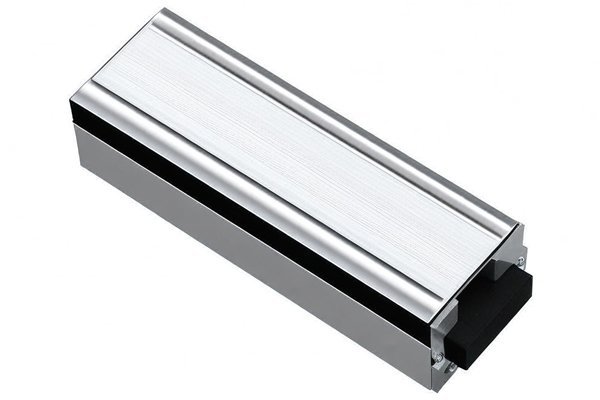Did you know that choosing the right material for CNC milling can influence up to 90% of the efficiency and quality of your prototype? Selecting the inappropriate material can lead to increased costs, wasted time, and ultimately, a failed project. This statistic emphasizes the critical nature of material selection in CNC milling, especially in prototyping, where rapid iteration and durability are key. In this comprehensive guide, we will explore how to choose materials for CNC milling, providing a detailed solutions framework to enhance production efficiency.
Understanding CNC Milling and Prototyping
CNC (Computer Numerical Control) milling is a subtractive manufacturing process where a computerized machine removes material from a solid block to create parts and prototypes. The precision of CNC milling makes it an ideal choice for various industries, from automotive to aerospace, where prototyping requires high accuracy and repeatability.
Prototyping itself serves as a critical phase in product development, allowing designers and engineers to visualize and test ideas before mass production. Within this stage, the selection of materials plays a pivotal role, as different materials exhibit varying properties that can affect performance, manufacturability, and cost.
Factors to Consider When Choosing Materials for CNC Milling
When choosing materials for CNC milling, especially for prototyping, there are several critical factors to consider:
Each material has unique mechanical properties that affect its machinability and performance. Common properties include:
Consider the end-use of your prototype. Will it undergo heavy loads? Requires high strength and rigidity materials? Are aesthetic properties important for visual assessments? The application will dictate specific properties needed from the material.
Budget constraints are often a deciding factor. Materials are available in various price ranges depending on the supplier and the material’s characteristics. Also, consider availability; specialty materials may result in longer lead times.
The type of material you choose will directly affect the speed and ease of the machining process. Material machinability can influence tool wear rates and surface finish quality.
Depending on the desired aesthetic or functional characteristics, certain materials may produce better surface finishes than others. This consideration is essential, particularly for prototypes that will be presented to stakeholders.
The dimensions and tolerances required for the prototype will dictate the material selection. For high-precision applications, it’s advisable to select materials that CNC machines can mill accurately.
Common Materials for CNC Milling in Prototyping
Here’s a breakdown of some commonly used materials in CNC milling and their relevant properties:
Properties: Lightweight, corrosion-resistant, and excellent machinability.
Applications: Used in aerospace, automotive, and consumer products.
Pros: Cost-effective and available in various grades for different needs.
Cons: Lower tensile strength compared to steel.
Properties: High strength, toughness, and hardness.
Applications: Often used in heavy machinery and structural components.
Pros: Excellent durability and wear resistance.
Cons: Can be more challenging to machine and may require specialized tooling.
Properties: High strength-to-weight ratio, corrosion-resistant.
Applications: Aerospace, medical implants, marine applications.
Pros: Exceptional performance in demanding environments.
Cons: Higher cost and challenges with machinability.
Properties: Lightweight, versatile, and available in various colors.

Applications: Prototypes for consumer electronics, automotive parts.
Pros: Cost-effective and simpler to work with.
Cons: Typically lower strength and durability than metals.
Properties: Good machinability, corrosion resistance.
Applications: Often used in plumbing fittings and musical instruments.
Pros: Attractive finish and good thermal conductivity.
Cons: Prone to scratching and may be less durable than other metals.
Steps to Select the Right Material for CNC Milling in Prototyping
Step 1: Define Your Prototype’s Requirements
Outline the mechanical, aesthetic, and functional requirements of your prototype. This document will serve as a reference for material selection.
Step 2: Research Material Options
Investigate available materials that meet your defined requirements, comparing their properties, costs, and availability.
Step 3: Evaluate Machining Processes
Consider how each material can be manipulated using CNC milling—parameters such as cutting speed, feeds, and tooling options significantly affect the final product quality.
Step 4: Conduct Preliminary Tests
If possible, create small test pieces using different materials to evaluate machinability and surface finish before committing to a final choice for the entire prototype.
Step 5: Consult with Experts
If unsure about material choices, consulting with a CNC machining service or a materials engineer can provide insights into the best materials for specific applications.
Step 6: Finalize Your Selection
Choose the material that aligns best with your prototype requirements, budget, and machining capabilities.
Best Practices for Enhancing Production Efficiency in CNC Milling
Optimizing production efficiency during the CNC milling process goes beyond material selection. Here are some best practices:
Adjust spindle speed, feed rate, and depth of cut according to the material and tooling used to minimize waste and improve finish quality.
Frequent machine maintenance ensures your milling equipment runs at optimal performance, reducing downtime from unexpected breakdowns.
Investing in high-quality cutting tools tailored for specific materials can improve cutting efficiency and prolong the lifespan of the tools.
Applying lean principles can proactively identify and eliminate sources of waste in the CNC milling process, enhancing productivity.
Incorporating sophisticated CAD (Computer-Aided Design) and CAM (Computer-Aided Manufacturing) software can optimize machining paths and improve the accuracy of part designs.
Sustaining open lines of communication between design, engineering, and production teams guarantees alignment in expectations and reduces revisions during machining.
Selecting the right material for CNC milling is a critical decision that impacts not only the efficiency of prototyping but also the subsequent manufacturing processes. By understanding the material properties, considering application requirements, and evaluating cost-effectiveness, you can make informed choices that enhance production efficacy.
In this blog, we’ve delved into various material options and outlined steps to tackle the challenge of material selection in prototyping. The result is a strategic approach that combines technical know-how with practical applications, ensuring your prototypes are well-prepared for their intended functions.
Choosing the right material for CNC milling is not merely about immediate results—it’s about establishing a foundation for future projects and maintaining a competitive edge in the marketplace. As you embark on your prototyping journey, remember the importance of material selection, not just for your current project but also for the countless innovations you will create in the future.
Stay focused, think critically, and remember: the key to success often lies in the details—beginning with the very material that will give life to your ideas.






